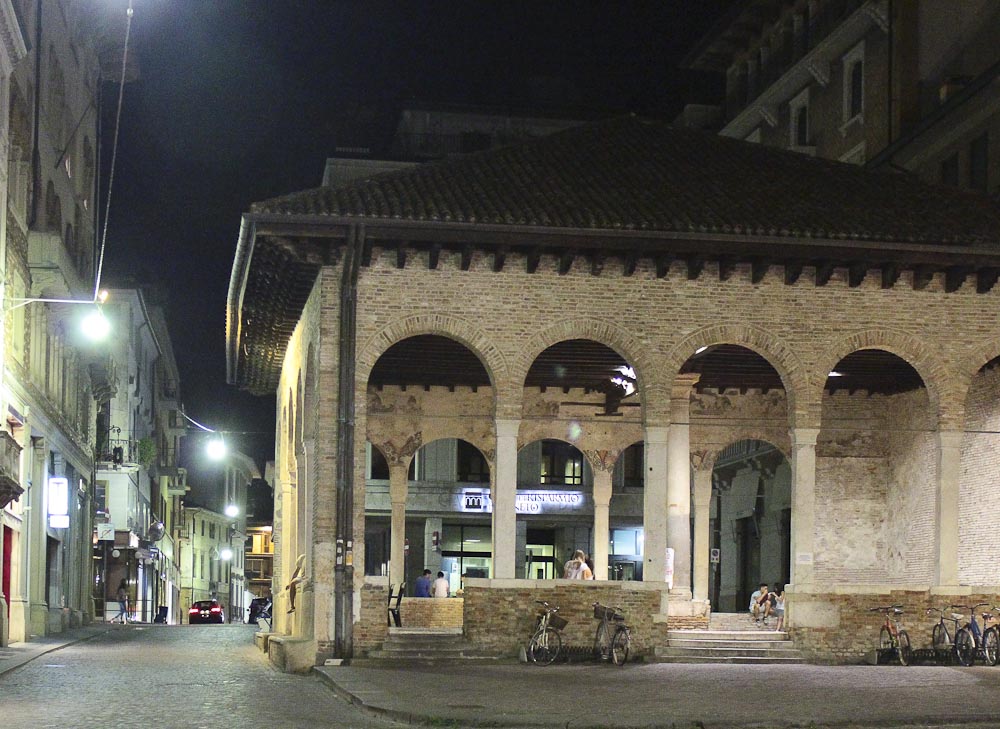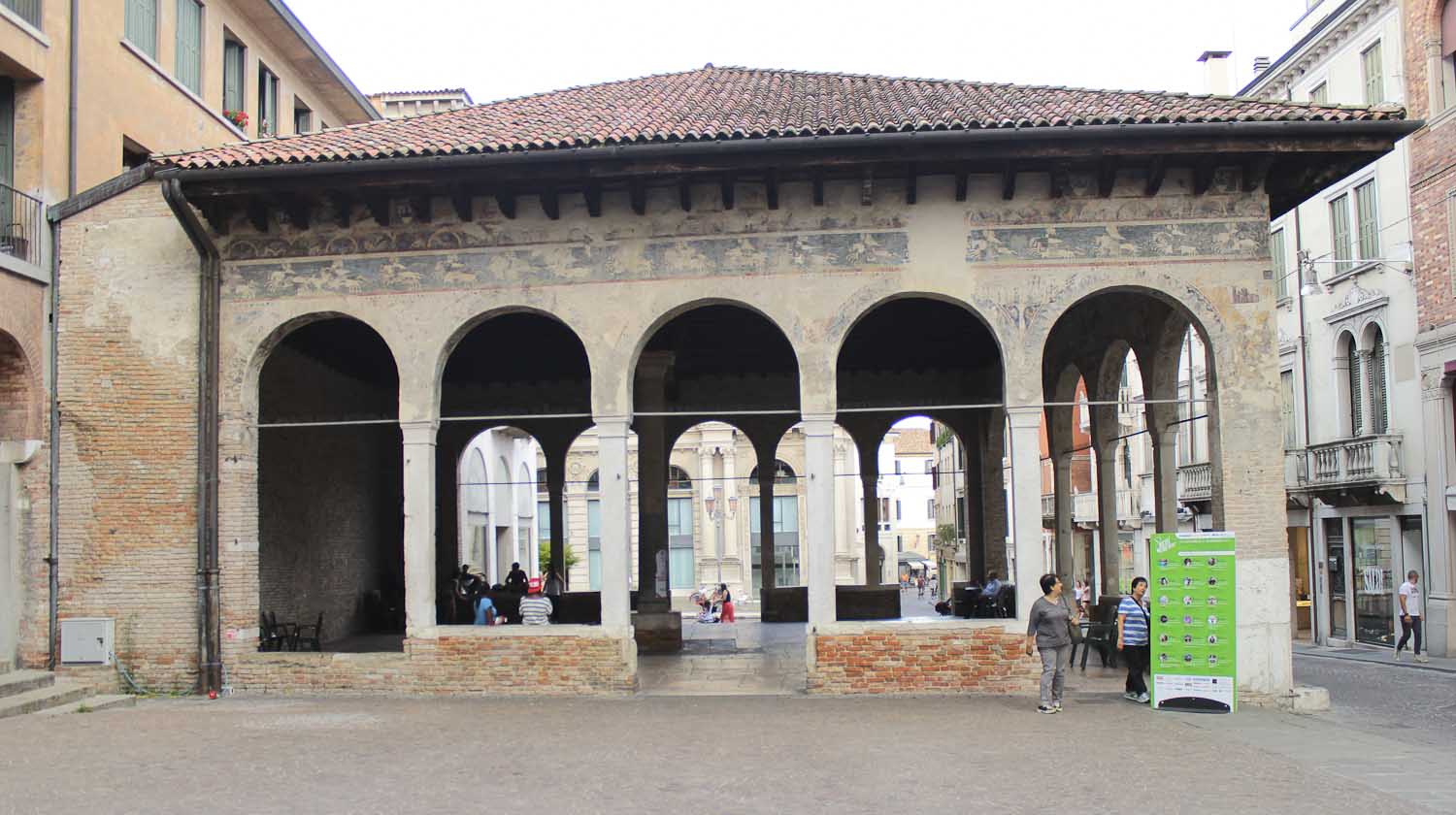Treviso’s Loggia dei Cavalieri
The Loggia dei Cavalieri is a living monument and a symbol of the rise and fall of Treviso in the region of Veneto.
Like most Roman cities Treviso developed around a north-south oriented street known as cardo maximus and an east-west street called Decumanus Maximus. Much later in 1276-1277 it was decided to build a loggia right at the intersections of these two streets. At that time the open arched loggia became a symbol of communal justice and government and most Italian communes had one in its main square, where nobles and knights could meet and play chess or discuss the issues of the day. Hence the name Loggia dei Cavalieri signifying that people of low status were denied access.
The Loggia dei Cavalieri in Treviso was an architectural gem. A covered square with five round arches on slender columns on three sides. According to testimony it was one of the most beautiful places in the city with wonderful frescoes featuring ornamental motifs and scenes from the classical tradition. At the beginning of the 1300s the first layer of decoration was covered and replaced by frescoes depicting figures and characters from the immensely popular chivalric romances. You can still see traces of galloping horsemen in a band above the arches on the eastern side of the loggia, and with some goodwill figures of stork, pelican, peacock, rooster and coats of arms can be discerned in sub-arches and small triangles above the band of knights, but only faint traces of the Medieval decorations have survived.

For 700 years the Loggia dei Cavalieri in Treviso has served as an open air living room.
After Treviso was definitively included in the Republic of Venice towards the end of the 1300s, the Loggia dei Cavalieri fell into a state of disrepair. The arches were walled up, the interior space was mainly used for storage and there was talk about demolition, until the intervention of the abbot Luigi Bailo who initiated a restoration of the Loggia in 1910-1911, but it was severely damaged on April 7 1944, when allied forces dropped over 2.000 bombs over Treviso, destroying a large part of the Medieval city centre.
The ruins were taken over by book stalls, but in the 1980s and 90s the Loggia dei Cavalieri was finally rebuilt using the original materials. Today the space is used for intimate concerts and public events and a shelter for shoppers caught in rain on via Martiri della Libertà and via Indipendenza.


 @GabrieleStabile.
@GabrieleStabile.  Italian Notes
Italian Notes
Leave a Reply
Want to join the discussion?Feel free to contribute!